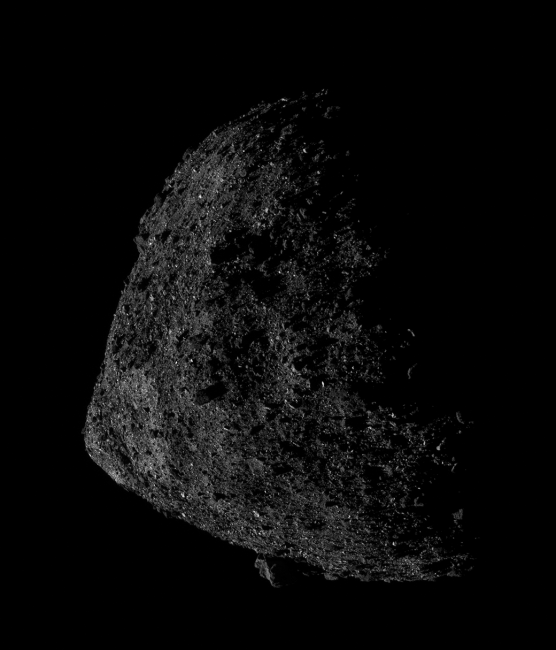Planetary Geology
The Solar System has an abundance of worlds with solid surfaces. The terrestrial planets, Earth’s Moon, the asteroids, and various other bodies are made of rock and other solid materials, which bear signs of their formation and history. Planetary geology is the way researchers study the cratering, weather, volcanoes, and other processes that shape worlds in the Solar System.
Our Work
Center for Astrophysics | Harvard & Smithsonian researchers contribute to planetary geology studies in various ways:
-
Studying the geology of the Moon to understand its origins and history. In particular, scientists think the Moon was created when another object hit Earth in the early days of the Solar System. Many geological features on the Moon are similar to those on Earth, and some studies have even revealed the presence of water, which brings the Moon into the list of water-bearing Solar System bodies.
Water on the Moon? -
Understanding the composition of asteroids and comets, to see how they fit in with the larger planets. Small Solar System bodies are thought to be planetesimals: remnants of the clumps matter that built the planets 5 billion years ago. Studying the geology of these small worlds is necessary for understanding the total history of the Solar System.
Dead Comets and Near-Earth Encounters -
Contributing to robotic space missions to asteroids and planets. The Origins, Spectral Interpretation, Resource Identification, Security, Regolith, Explorer (OSIRIS-REx) is designed to collect a sample of material from the asteroid Bennu, and bring it back to Earth for laboratory analysis.
Asteroid Mission Will Carry Student X-ray Experiment -
Classifying exoplanets to understand the possible types of rocky planets. Earth is the largest rocky world in the Solar System, but there’s no reason to think rocky planets can’t grow larger. Astronomers have discovered many super-Earths and “mega-Earths”, which are likely different than the terrestrial planets of the Solar System, in ways we’re just beginning to explore.
Astronomers Find a New Type of Planet: The ‘Mega-Earth’

NASA's OSIRIS-REx spacecraft captured this close-up image of the near-Earth object Bennu, which is a "rubble-pile" asteroid. The geology of other worlds — including asteroids — is part of the story of how rocky planets like Earth form and evolve.
The Geology of Planets
In addition to the terrestrial planets — Mercury, Venus, Earth, and Mars — planetary geology is devoted to understanding the materials making up the moons, asteroids, and other Solar System bodies. Though “geology” literally means “study of Earth”, the field of planetary geology carries what we’ve learned here to other worlds. Scientists have found water and volcanoes throughout the Solar System, observed different types of minerals on asteroids, and discovered subsurface oceans on icy moons. While Jupiter and its fellow gas giants are excluded, every other world in the Solar System has some kind of solid surface, which bears signs of its particular history.
Modern planetary geology began with the construction of space probes that traveled to the Moon, Mars, Venus, and beyond. Advanced telescopes also identify materials on the surfaces of planets, moons, and asteroids by the way they absorb and emit light. Several missions — including NASA’s OSIRIS-REx spacecraft — are designed to bring samples of surface materials of Mars and asteroids back to Earth for laboratory analysis. Students at the Center for Astrophysics | Harvard & Smithsonian developed the Regolith X-Ray Imaging Spectrometer (REXIS) instrument for OSIRIS-REx, in collaboration with students at MIT.
Exoplanet Geology
An exciting development in planetary geology comes from exoplanets, which are worlds orbiting other stars. Many of these planets are “super-Earths”: worlds that are larger and more massive than Earth, but still made of rocky material. We are just beginning to understand these planets, since we don’t have any examples to study close at hand. In particular, researchers want to know how geological processes might differ on super-Earths, and whether they might be capable of supporting life.
Related News
Giant Magellan Telescope Mount Fabrication Begins
The Giant Magellan Telescope’s Final Mirror Fabrication Begins
Astronomers Find Potentially Volcano-Covered Earth-Size World
Doctoral Student Ellen Price Awarded 51 Pegasi B Fellowship
Could Life Exist Deep Underground on Mars?
Telescopes and Instruments
Giant Magellan Telescope
Visit the GMT Website
Lynx X-Ray Observatory
Visit the Lynx X-Ray Observatory Website
Magellan Telescopes
Visit the Magellan Telescopes Website
MMT Observatory
Visit the MMT Website
Spitzer Space Telescope
Visit the Spitzer Space Telescope IRAC Page